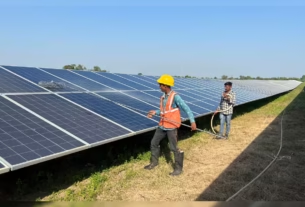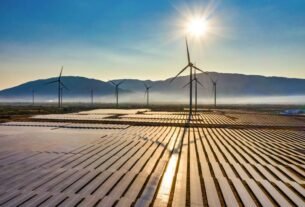In Short : Under the Approved List of Models and Manufacturers (ALMM) framework, India has reached a significant milestone by increasing its solar photovoltaic (PV) module manufacturing capacity from 2.3 GW in 2014 to 100 GW. With policy support like the Production Linked Incentive (PLI) scheme, India’s solar ecosystem is growing rapidly. This surge puts the country firmly on track to meet the 500 GW non-fossil fuel capacity goal by 2030, strengthening its infrastructure for clean energy independence.
Alignment of Policies and Manufacturing Momentum
The ALMM program, which was launched in March 2021, has accelerated domestic sourcing and quality assurance for the deployment of solar modules, especially in utility-scale and government-led projects. Under the ALMM umbrella, India grew from a dozen or more module manufacturers to 100 registered entities running 123 manufacturing facilities nationwide in just over four years.
Initiatives like the PLI scheme for high-efficiency solar modules, which promoted mass production and innovation and significantly advanced India’s Atmanirbhar Bharat (self-reliant India) drive for clean technologies, were credited by Energy Minister Pralhad Joshi with this growth.
Growth Catalysts & Sector Impact Manufacturing Scale-Up: The increase in manufacturing capacity to 100 GW makes it possible to quickly deploy solar systems across the country and creates opportunities for solar exports.
Resilient Supply Chain: Scalable solar system drawing-based deployments are supported by a decreased reliance on imported modules, which also improves system stability.
Investor Sentiment: As solar becomes a more investable growth engine, a strong domestic ecosystem may increase investor confidence, which may be reflected in better share price trends for the solar industry.
Clean Energy Ecosystem: The key to sustainable development is the integration of storage, smart grids, and localized solar charging through hybrid systems made possible by a strengthened module industry.
Transition to Clean Energy and Sustainable Objectives
India’s larger climate agenda is in line with this manufacturing boom. Since solar power makes up almost 250 GW of the 500 GW non-fossil target, module self-reliance decreases dependency on non-renewable resources and boosts confidence in decarbonization plans. Stronger domestic capabilities also facilitate sustainable growth, solar-powered rural electrification, and the expansion of distributed solar energy systems like rooftop solar.
The Bottom Line
An important turning point in India’s clean energy journey has been reached with the production of more than 100 GW of solar modules under ALMM. This accomplishment not only demonstrates India’s industrial and technological prowess but also fortifies the country’s ambitious renewable energy roadmap. Deploying integrated solar systems, increasing storage capacity, and further integrating solar energy into India’s sustainable development fabric are the next frontiers as module supply stabilizes.




